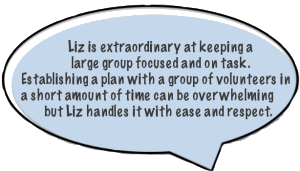Strategic Planning
Shared focus and direction.
One team, two days and the right strategic planning process combine to give you the vision, direction and momentum you need to take massive action. And it’s built on consensus so the focus and direction are shared.
Strategic planning is more critical than ever in today’s global business environment. Perhaps more than anything else you will do as a leader, creating a strategic plan with your team will help your team manage change, create a focus on success, and provide the roadmap you need
to achieve that success.
– Lori Badgett, Board President,
Leadership Music
With Strategy and Leadership, your strategic planning is done with a focus on urgency and a bias towards action that you will not find elsewhere.
After the initial data gathering is completed and analyzed, your team can complete the entire planning process – and walk away with a full strategic plan, complete with 1st quarter tactics — in two days.
The work is fast-paced, but designed to allow everyone on your team to participate in ways that are comfortable for them. The two days are both highly challenging and energizing. And most importantly, the process builds consensus and commitment at every step, from every member on your planning team.
The result: An amazing 85% of our strategic plans are carried through to completion.
Establishing Your Framework:
We begin by working with you to develop a focus question to guide the work through the rest of the process. The contextual question is derived from information gathered about your current internal and external strengths, weaknesses, insights, and trends affecting your organization. Using that question as the framework, we move through a five-step process to generate your plan.
Environment Scan & Data Gathering:
We begin by deepening your understanding of the current internal and external influences on your organization. Using interviews, surveys, focus groups, and other processes, we examine your organization’s history for former successes, challenges, and trends. We work with you to determine how these influences specifically affect your organization.
Identifying Your Practical Vision:
In identifying your practical vision, we facilitate a brainstorming session to determine what your team wants to see in place in the next three to five years. First, individuals determine concrete elements of the vision they believe can be completed. These individual ideas are then shared in small groups before being discussed with the larger group. This process for identifying a practical vision provides an opportunity for each participant to share and include their ideas on the future of your organization.
Recognizing Barriers:
After identifying the vision, your team works together to recognize the barriers preventing its realization. This step moves participants from focusing on things that the organization is lacking, such as money or resources, to identifying concrete social contradictions and issues that are causing significant roadblocks. This important step allows your group to identify the key areas where energy needs to be focused in order to ensure success.
Defining Strategic Directions:
Once barriers have been identified, your team works together to formulate innovative and practical actions to deal with them and move the organization forward. These strategic directions are designed to hold your course for three to five years – even as people change, information is updated, and new actions are created.
Developing Your Implementation Plan:
Your team learns how to take broad strategic direction and bring it to life through smart, well-planned tactics. After defining your strategic direction, the group develops a concrete implementation plan that specifically outlines the major events and projects for the first year. Your team then places special emphasis on the first 90 days, outlining precisely what will be done, who will be responsible for the tasks, when they will occur, what the projected costs will be, and other key elements of each action.
Follow-up:
After completing your strategic planning process, it is important to keep the momentum building, making adjustments and tracking progress through quarterly, semi-annual or annual facilitated follow-up sessions. As with most things, we find that follow-up sessions play an invaluable role in keeping focus and moving the group toward full implementation of their vision.
RESULTS:
At the conclusion of this highly-participatory planning process you have a strategic plan that is fully owned by the company leadership, an established accountability structure, and clearly defined actions steps that ensure that your plan will be fully implemented.


